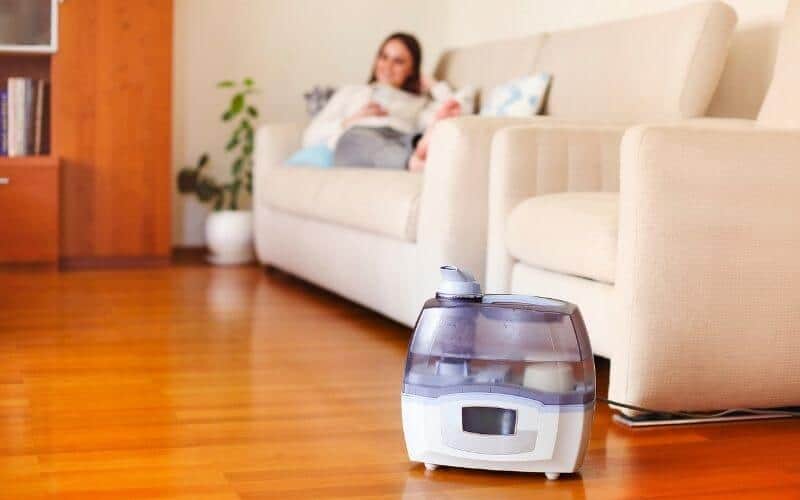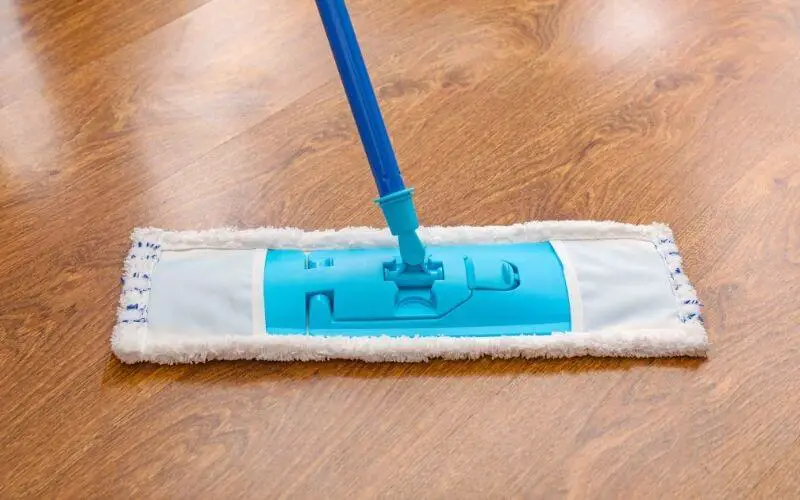Exposing your wood floor to too much moisture could cause a lot of damage, same with if they become dehydrated or dried out. When dehydrated, wood floors can experience shrinkage, cupping, squeaking, gapping, and cracking.
Wood floors have a low level of elasticity which allows them to expand or contract without the right amount of moisture; when the floor expands, crevices and cracks are created on the floor.
If you notice that your wooden flooring is too dry, you need to know how to rehydrate wood floors as apply them as soon as possible to prevent any further complications.
You can rehydrate wood floors with vinegar, water-based polyurethane, hot water, or a humidifier. This adds just the needed amount of moisture to the flooring.
Read: Should humidifier be on the floor
How to Rehydrate Wood Floors
Table of Contents
When rehydrating wood floors, you only need to increase the wood’s moisture content to the recommended level, which is not more than 9%. Here’s how to go about adding moisture to your wood floors.
Using A Vinegar Solution
If your wood floor is not extremely dried out with fewer cracks and gaps, you can use a mild vinegar solution to clean the floor surface and rehydrate the wood. First, remove all the furniture from the room. Then, go in with a broom to remove all the dirt and debris present on the floor surface.
When the floor is clean, combine white vinegar with water in a ratio of 1:10 and use a wet mop to thoroughly mop the wood floor with the solution.
When the moisture from this solution penetrates into the flooring through the cracks and gaps caused by dryness, it causes it to become rehydrated.
Ensure to wring out the mop properly before using, to avoid over-saturating your floor with excess moisture. After mopping the entire floor, use a dry piece of cloth to wipe up the wood surface.
Install a Humidifier
Maintaining a relative humidity condition from 30-50% is recommended if you have wood floors. To maintain the humidity levels within the affected rooms, you can install a humidifier. This tool increases the relative humidity of the room by adding extra moisture to the environment.
There are different types of humidifiers, but they are commonly used to increase air moisture levels. You can opt for an evaporative humidifier, an ultrasonic humidifier, or a steam humidifier. They utilize different mechanisms to release steam into the air.
Use Water-Based Polyurethane
Water-based polyutherane can be used to rehydrate wood floors and restore their original glossy sheen and luster. These type of finishes also helps to minimize moisture loss from the wood material due to evaporation.
They’re super easy to apply compared to oil-based urethane finishes and can be used alongside vinegar cleaning, which helps to achieve an even smoother surface finish.
Read: What floors ca you use a steam mop on
Use Oil-Based Urethane
This is similar to water-based poly; oil-based urethane protects your wood floor; it seals the surface and prevents further moisture loss.
It’ll also restore your wood floor’s sheen and beauty. Oil-based urethane is, however, a bit more difficult to apply compared to water-based poly finishes.
Keep in mind that you would need to sand off the old finish first before applying the new finish regardless of the type of urethane finish you make use of.
Read: can you use vegetable oil on hardwood?
Boil Water
Boiling water in a pot is a simple rehydration method for wood floors. It functions similarly to a humidifier, and all you need to do is pour a gallon or two of water in a sizeable pot, place it on the stovetop and bring it to a boil.
When the water begins to boil, steam/water vapor is released into the air, increasing the room’s relative humidity. The wood absorbs the moisture released into the air, which rehydrates it.
Install Window Treatments
Exposing your wood floor to too much sunlight can cause it to become too dry. The heat from the sun dries out the wood material very quickly.
To prevent this from happening, you need to filter out the sun’s rays, which you can do by installing window treatments. With less sunlight exposure, the wood retains more moisture and maintains its shiny appearance.
How to Tell if Wood Floors are Too Dry
During winter, people put up more heat sources in their houses seeking warmth; this causes low humidity conditions. When too much moisture is lost from wood flooring, the floor dries up and contracts.
This can cause a number of problems if not handled immediately. Here’s are some signs that indicate that your wood floor is too dry:
Gapping
The national wood floor association (NWFA) recommends keeping the relative humidity of your room(s) between 30-50%; this ensures optimal performance of your wooden flooring. Also, try to maintain a temperature level between 60-80-degrees Fahrenheit.
Low humidity (less than 30%) and temperatures are higher than 80-degrees Fahrenheit can dry out your wood planks and cause shrinkage and gaps between adjoining planks.
These gaps are usually slender and sometimes unnoticeable. However, if you should spot a slightly abnormal gapping on your wood floor, it is an indicator that the floor is too dry.
Splitting and Splintering
When your wood floor is exposed to extreme dryness caused by low humidity levels, it has a significant impact on your hardwood floor.
It causes the wood to become weaker and more brittle; this leads to splintering, splitting, or cracking along the grain of the wood. This is permanent damage, and the affected planks would need total replacement to restore the floor’s original look.
Read: How to dry water under wood
Conclusion
There are a couple of ways to rehydrate wood floors; using vinegar, a humidifier, urethane finishes, and even a pot of water. Please note that the earlier your floor’s dryness is tackled, the less damage you would have to deal with.

